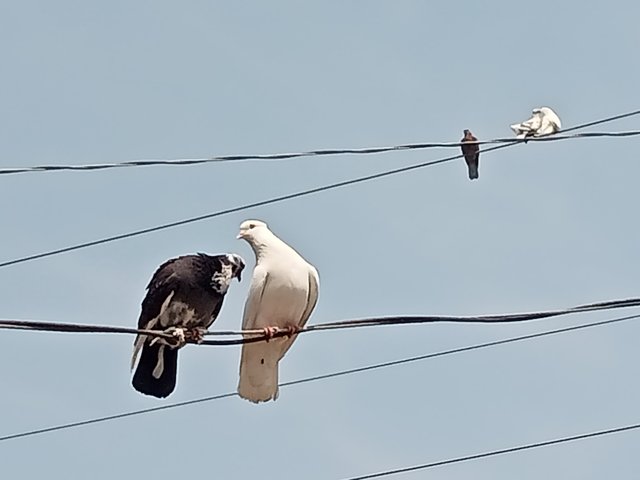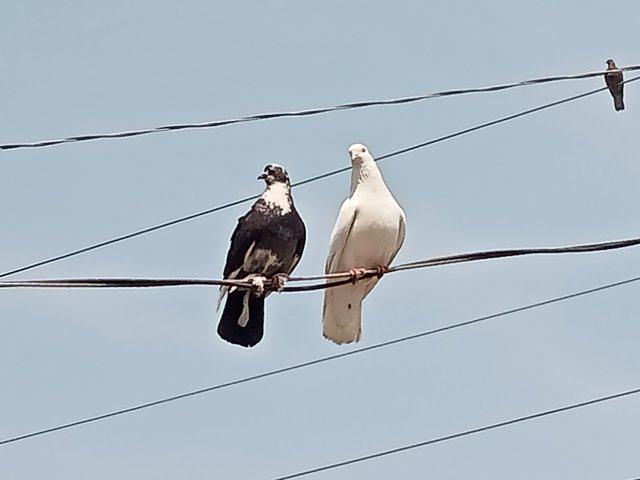
Pigeons are the most popular of the various domesticated birds in our country. Because, in most cases, pigeons are reared because of its external aesthetic aspects. In ancient times, pigeons were kept for exchanging letters. It is said that in ancient times, kings used to choose pigeons for their various messages. In addition, pigeons are regarded all over the world as messengers of peace. For this reason, pigeons are inaugurated in various constructive works irrespective of religion.
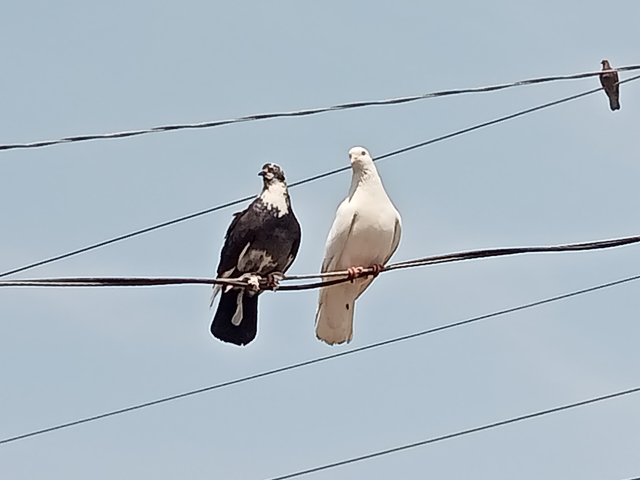
Most importantly, there is no extra cost to keep pigeons. Pigeons can be easily domesticated. Pigeons can be kept in any corner of the house or in the yard or in small or small places like roof or cornice. Even pigeons can be kept by hanging baskets on the roof. For this reason, pigeons can be kept in many houses in the city or in the village.
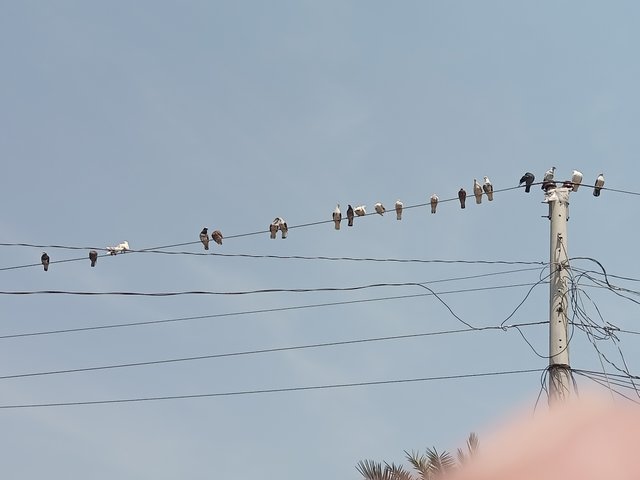
Pigeon meat is extremely tasty and fortifying, experts say, pigeon meat has more protein than other common bird meat. As a result, besides meat, pigeon meat is also eaten to meet the increased demand for protein. By raising pigeons commercially, many have been able to turn it into a profitable business in a short period of time. Pigeons usually live in pairs. Each pair has a male and a female pigeon. They live for 12 to 15 years. As long as they survive, they reproduce through eggs. After laying eggs, both male and female pigeons lay eggs in stages. If a pair of pigeons suddenly breaks, you have to get some speed to make that pair. To make a new pair, male and female pigeons have to be kept in the same room for some time.
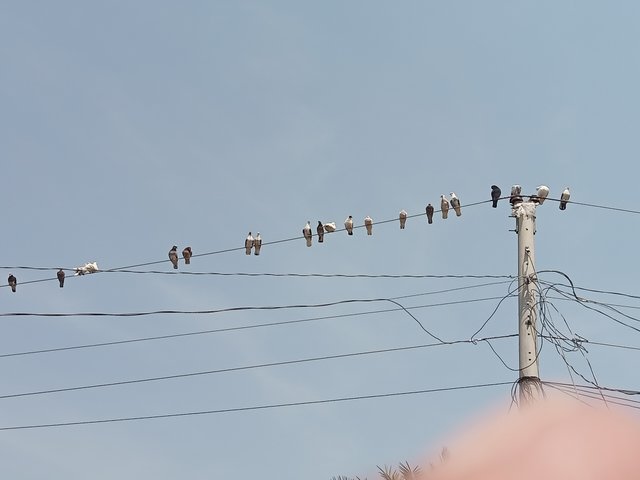
Various benefits of keeping pigeons
The benefits outweigh the disadvantages of keeping pigeons. Later various benefits of keeping pigeons were mentioned.
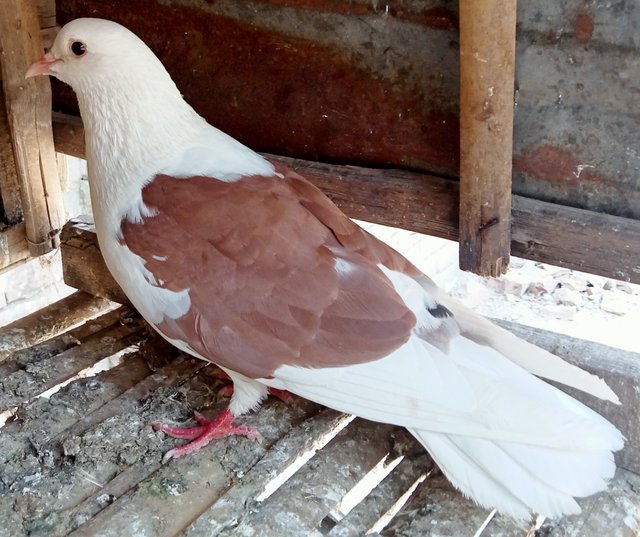
(1) Generally a good breed of pigeon is able to lay 12 pairs of eggs per year. Babies are found in almost every one of these eggs. This baby is ready to be eaten or sold within the next 4 weeks.
(2) Pigeons can be domesticated or reared among other domesticated birds.
(3) Pigeons can be reared in very few places. It is possible to keep pigeons even in hanging baskets. The cost of raising pigeons is very low as it takes up less space for rearing.
(4) In most cases pigeons find their own food. For this reason, it is safe to say that there is not much extra care or cost for pigeon food.
(5) No additional care is required for pigeon habitat. Pigeons can be easily reared by building a wooden house in the yard or on the roof. Pigeons can be reared in proof size baskets.
(6) It takes 5 to 6 months for a full grown pigeon to lay eggs. Since this short time, the pigeon has been able to lay about 12 pairs of eggs a year. At the age of 26 to 28 days, the baby pigeons are ready to be eaten or this baby can be marketed. Usually pigeon babies are also chosen by many as a patient's diet.
(6) The baby hatches from the pigeon's egg in just 18 days as per normal rules. This baby starts laying eggs again after the next 5 to 6 months. As a result, the pigeons continue to increase their numbers in a natural way.
(6) Pigeon meat is in great demand. Because, pigeon meat is very tasty and strong. Moreover, pigeons are somewhat cheaper than other meat supplies in the market.
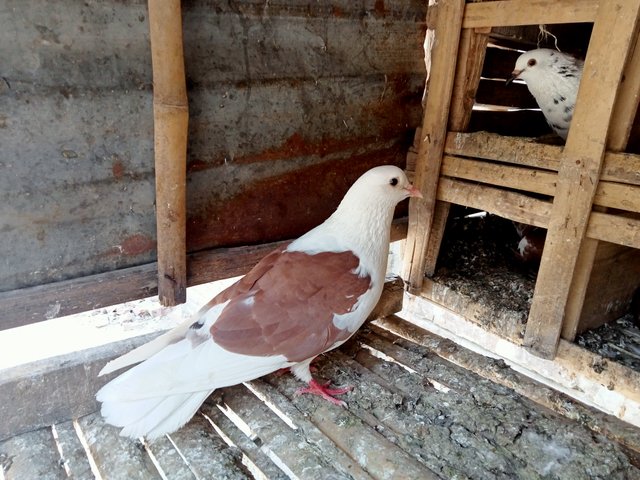
If you raise a very good breed of pigeons, it is not very surprising to get a few pairs of pigeons from that pair in the next 1 year. This pigeon can be considered as a profitable business. Because, the cost of raising pigeons is not very high. Even pigeon disease disorder is less. Pigeon accommodation does not require extra care. For this reason raising pigeons on a commercial basis is certainly profitable.
Many people nowadays are inclined towards pigeon keeping as pigeons breed continuously. Many people choose pigeon meat as an alternative to chicken meat or as an alternative to guest birds.
Author: Abdullah Al Mamun, Deputy Director, Bangladesh Agricultural Research Institute.
Pigeon rearing management: Detailed information
Introduction
It is known from history that people have been keeping pigeons since ancient times. At that time people used to sacrifice pigeons to please the gods and goddesses. Pigeons were also widely used for news transmission, entertainment, and delicious meat. At present in our country also pigeons are kept mainly for meat and entertainment.
Pigeon rearing requirements
Pigeon rearing is no longer limited to hobbies and entertainment but is now considered a lucrative business. In addition to enhancing the beauty of the pigeon house and environment, it can be reared at low cost and with little hassle. Pigeon meat is very tasty and very useful for the new disease free person as it strengthens. It is customary to use pigeon meat as a diet for the patient. Many people in our country are currently raising pigeons on a commercial basis.
The economic importance of raising pigeons
In Bangladesh, pigeons are generally reared for meat production. Pigeon meat is very tasty, fortifying and used as a diet of the patient which is very popular among the common people.
- Minimum cost compliance:
Pigeon rearing is not expensive at all compared to poultry. Pigeons can be easily reared with low capital, low cost and limited space. - Minimum cost to build a pigeon house:
Pigeons can be reared as a family in a very common way in rural areas. If the extra part of the rice in the house is made like a wooden or bamboo house or nest, then the pigeons come here and build their nests and breed. It goes without saying that it does not cost much. Just as many families can meet their nutritional needs by raising pigeons in this way, they can also be financially profitable by selling regular pigeon babies in other ways. Commercial pigeon rearing also has limited expenditure. Most of their houses are made of wood and bamboo. After all, it requires very little space. - Egg hatching rate:
In the case of pigeons, the hatching rate is 98%, which is about 70-75% in the case of chickens. They do not need incubators or any other expensive equipment to hatch their eggs.
Generation break
They start reproducing at a young age. So a producer can benefit economically in a short period of time. A pigeon usually gives 10-12 pairs of young per year. It takes 16-18 days for the baby to hatch from the egg.
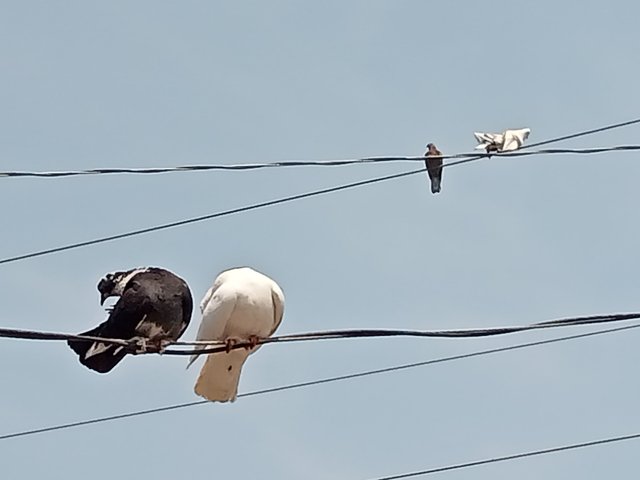
Pigeon breed
There are many different types of pigeons. It is known that there are more than 20 species of pigeons in our country. The following are some of the major varieties discussed.
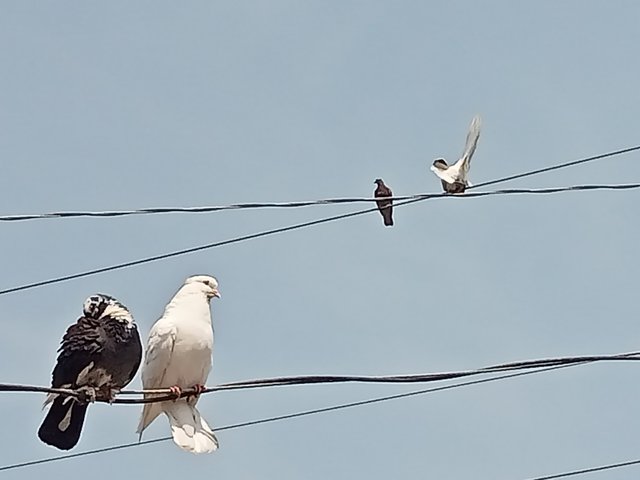
- Gola
The origin of this breed of pigeon is the Pak-Indian subcontinent. This breed of pigeon is found in abundance in our country and it is quite popular for its meat. When they build nests around the house, they automatically come and live here. Their colors are different shaded gray and bird-blue. The iris of their eyes is dark red and the color of their feet is red. - Bullet
Goli breed pigeons are different in nature from Gola breed pigeons. This breed of pigeon was very popular in Lahore, Pakistan and Kolkata, India. They have wing feathers under their tails. The lips are small and the legs do not have hair. Their color is different in white. - Tumblr
These species of pigeons are called tumblers because they soar in the sky. In our tens, this variety is known as Giribaj. Their origin is the Pak-Indian subcontinent. They are highly valued in our country for entertainment. - Lotan
Lotan pigeons are also called rolling pigeons. Just as a mountain pigeon stumbles on zero, so does a Lawton pigeon stumble on the ground. This white pigeon has a rotating crest. Their eyes are dark brown and their legs are hairy. - Lahori
In our country this pigeon is known as Shirazi pigeon. Their place of origin is Lahore. The feathers on the front of the eyes, chest, abdomen, buttocks, legs and tail are completely white around the eyes and the back of the neck and wings are colored from the head. Usually black, red, yellow, blue and silver pigeons are seen.
. King
Among the King breed pigeons, White King and Silver King have gained special popularity in other countries of Europe including America. The King breed is used in pigeon exhibitions and in the production of squabs. There are also Blue Red and Yellow King. This breed of pigeon is mainly used in exhibitions.
. Fantel
This is a very ancient breed of pigeon. Fantal pigeons originated in India. These species of pigeons are called fantals because they can match the tail feathers like wings. Their colors are mainly white but black, blue and yellow fantals have also been created. Their tail feathers are large and pointed upwards. The legs are covered by feathers. This breed is used in pigeon exhibitions and is very popular in the country and abroad.
. Jacobin
The head feathers of this pigeon are spread up to the neck which looks like a special kind of skull. Their exact origin is not known. However, their original birthplace is believed to be India. These pigeons are usually white, red, yellow, blue and silver. Their bodies are quite tall. The eyes are white like pearls. - Mookie
The neck of this species of pigeon is curved backwards like a swan and trembles. Muki pigeons are thought to have originated in India. The three winged feathers on both wings are white which is not seen in any other pigeon. The head of this breed is white, the chest is not very wide but it is high and extends towards the front. This white, black and blue pigeon has no hair on its legs.
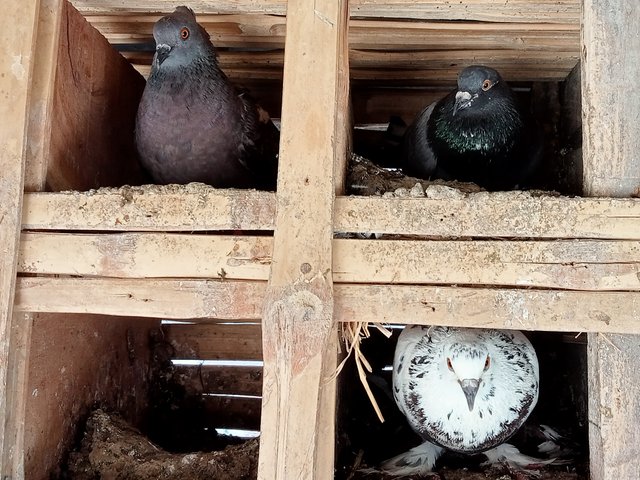
Pigeon breeding, egg production and egg hatching
Like the ducks and chickens, no dead pigeon is paired with a female pigeon. If they are kept together for a week, they are paired. Eggs are produced in the reproductive system of pigeons like chickens. However, only two follicles are usually formed together in the ovary.
For this reason, each female pigeon lays two eggs. Eggs are laid 40-44 hours before laying and fertilized at least 24 hours before laying. That is, the egg stays in the ovary for 18-20 hours, during which time it is fertilized.
After laying eggs, both male and female pigeons start laying eggs in stages. The female pigeon lays its eggs from about noon till the next morning and the rest of the time i.e. from morning to afternoon the dead pigeon lays it. Fertile or infertile eggs can be identified by examining the eggs on the fifth day. If you hold it in front of the lamp, you can see the blood vessels inside the fertile egg. But in case of infertile eggs the inside of the egg will look transparent. Usually 16-18 days after laying the eggs hatch. Thus a female pigeon can usually produce 10-12 pairs of young in 12 months. From the first day of life to the age of 28 days, the baby pigeon has a growing condition. At first the whole body is covered with yellow thin hairs.
The nostrils and ear piercings look quite large at this time. After about 4-5 days, the child's eyes open or open. On the fifteenth day the whole body is covered with flocks. In about 19-20 days, both wings and tail mature and the lips become normal. In this way the baby pigeon reaches maturity in 28-28 days. Pigeons usually live for 20-30 years.
Pigeon Milk
Pigeon milk is produced in pigeon droppings. This food sac has two parts or lobes. Preparations for the production of "Pigeon Milk" started from the eighth day of laying eggs. This 'pigion milk' is produced under the influence of prolactin hormone of the anterior pituitary gland. For this reason, no extra food is required for the pigeon cubs. Because for about 7 days, the baby receives natural food from its parents. It is called pigeon milk. Pigeon milk is the globules of fat in the cells of the nutrient layer that are stored in sufficient amounts in the food sacs of both parents. Pigeon milk is an ideal food for pigeons. It contains 80% water, 16.5% meat, 10% fat and 2.5% various minerals. Pigeon milk is produced from the inner lining of the food sacs of both parents pigeons. The tongue of a pigeon is long and slender. The lower part of the mouth cavity is quite wide which is suitable for feeding puppies. The mother and father insert the pigeon's mouth into the baby's mouth and deliver the food directly to the esophagus.
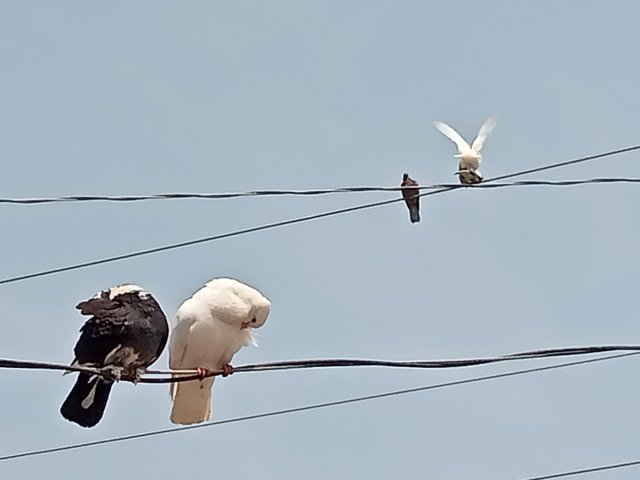
Pigeon house
In our country, especially in the villages, pigeons are reared by tying earthenware or tin on the cornice of the tin or thatched house. Apart from this, pigeons also make small nests made of wood. Interestingly, if one pair of pigeons is reared in a few pairs of pigeon houses, new pairs of pigeons will come and nest in the remaining houses in a few days. Needless to say, pigeon keeping is very easy and profitable. It is advisable to have a well-planned system for raising pigeons on a small scale. Special arrangements for making pigeon houses or nests are discussed below.
Site Selection: Pigeon farms need to have high and dry flat land.
Height of the house: The house has to be raised keeping in view that dogs, cats, rats, beji etc. cannot reach the house of pigeons. For this purpose, houses can be built on wooden or bamboo poles.
Room range: There should be one house for every pair of pigeons. The house should be built keeping in mind that a pair of pigeons can roam freely inside the house.
Hygienic measures: Pigeon house or nest should be constructed in such a way that there is less infestation of insects, worms, germs etc. and the house can be easily cleaned and disinfected.
Sunlight: Adequate sunlight should enter the room. This is because sunlight helps in the production of vitamin-D in the body of birds as well as keeps the environment germ-free.
Ventilation: Adequate ventilation should be provided in the pigeon house. This is because the lack of polluted air or adequate light air can cause damage to the health of birds.
Pigeon food
Like poultry, pigeons need to have starch, fat, meat, minerals and vitamins in their diet. The pigeon feeds according to the needs and size of its body. Each pigeon consumes about 30-50 grams of food daily. Pigeons mainly eat grains like wheat, peas, kheshari, maize, mustard, barley, rice, paddy, pulses etc. For free-ranging pigeons, half a handful of grains per head in the morning and afternoon in specific containers
Food ingredients
Amount (%)
Corn
35
Peas
20
Wheat
30
Oyster powder / limestone crushed / bone crushed
07
Vitamin / amino acid premix
07
Salt
01
Total = 100
If left unmanaged, they can be left astray and lose the right path. It is better to use the following food mixture for commercial production of pigeons.
Pigeon food list
Along with this pure water should be provided for the pigeons. One container should keep food as required for pigeons and the other container should have clean and pure cold water as required.
Pigeon physiological information
- Body temperature = 36.6-400C
- Body weight = (a) Light variety: 400-450 grams
(B) Heavy variety: 450-500 grams - Drink water = (a) Winter: 30-60 ml daily
(B) Summer: 80-100 ml per day - Food intake = 30-60 grams per day (average)
- Egg hatching period = 16-17 days.
Symptoms, treatment and prevention of important diseases of pigeons
Name of the disease
Because
Symptoms
Treatment
Resistance
Salmonellosis / paratyphosis
Salmonella typhimurium
Mucous glue, foam and foul-smelling diarrhea occur. The body is constantly drying up. Imbalance and paralysis are observed.
Proper antibiotics should be applied by testing antibiotic sensitivity. Along with this, vitamins and minerals should be taken.
Animal safety measures must be complied with.
Vaccination must be provided.
Animal safety measures must be complied with.
Vaccination must be provided.
Pasteurella maltocida
Pigeons die within 24-48 hours without any symptoms of diarrhea, fever (62-630 ঈ).
Proper antibiotics should be applied by testing antibiotic sensitivity. Along with this, vitamins and minerals should be taken.
- Animal safety measures must be complied with.
- Vaccination must be provided.
Coryza or Owl's Head
Haemophilus influenzae
Colds, swollen eyelids look like owl's head, inflammation of the retina causes muco-purulent discharge from the eyes.
Proper antibiotics should be applied by testing antibiotic sensitivity. Along with this, vitamins and minerals should be taken.
- Animal safety measures must be complied with.
- Vaccination must be provided.
Mycoplasmosis
Mycoplasma columbinum
Colds, eyes and nose discharge first water and then muco-purulent substances. Excessive inflammation of the mouth and throat causes swelling and bad breath. There is shortness of breath.
Thiamulin, tylosin, enrofluoxetine, spiramycin, lincomycin group drugs
- Animal safety measures must be complied with.
- Vaccination must be provided.
Chlamydiosis or ornithosis
Chlamydia citasi
Watery eyes and nose, loss of health and death after suffering from the disease
Chlortetracycline, tylosin, lincomycin, spiramycin etc.
- Animal safety measures must be complied with.
- Vaccination must be provided.
Newcastle or Paramixo virus-1
Paramyxo virus type-1
Green diarrhea, shortness of breath, wheezing and shortness of breath. Imbalance, dizziness, paralysis of the wings and legs etc.
Antibiotics, amino acids, vitamins, immuno-stimulators
- Biosecurity measures must be complied with.
- Must be vaccinated.
Diphthero small pox (smallpox)
Borrelia columbari virus
Featherless skin, especially around the eyes, around the lips, and on the legs can be seen as sores or pox
Antibiotics, amino acids, vitamins A and C, immuno-stimulators, topical iodine
- Biosecurity measures must be complied with.
Parasitic diseases
Imeria, Ascaris, Capillaria, Trichomona
Weakness, reluctance to eat, dehydration, diarrhea (coccidia with blood in the stool), malnutrition and eventually death.
Deworming, Vitamin and Mineral Premix, Amino Acids
- Biosecurity measures must be complied with.
Malnutrition and metabolic diseases
Vitamin A deficiency

Injuries to the body, decreased vision and inflammation of the retina, loss of appetite, impaired physical growth and feather formation, decreased productivity and hatchability
200 IU is required daily
Regular intake of vitamins, premixes and minerals or food rich in vitamin A.
Vitamin D deficiency
The bones become soft and curved, egg production and hatchability are reduced, egg shells become thinner.
45 IU is required daily
Provide Vitamin D and Mineral Premix, Vitamin D rich foods (Codliver Oil, Fish Mill).
Vitamin E
Encephalomalacia is a disease that results from paralysis. Fluid accumulates under the chest and abdomen, causing edema. Egg fertility decreases.
1 mg
Vitamin E should be provided along with selenium. Foods rich in vitamin E (grains, wheat, rice bran, dried fish) should be eaten.
Vitamin K
Anemia occurs due to bleeding.
Providing vitamin K premix and minerals. Providing vitamin K rich food (green vegetables and fish powder).
Vitamin B1
Paralysis of the legs, wings and neck. As a result of neck paralysis, the neck is facing backwards towards the sky, inconsistency in movement is observed.
0.1 mg
Provide vitamin B1 rich premix and minerals (rice husk, wheat powder, vegetables)
Vitamin B2
The baby's legs are paralyzed. Later the nails or fingers become curved. The physical growth of the pups is impaired.
0.12 mg
Vitamin B2 rich premix and minerals (green leafy vegetables, gram, khail, alpha-alpha, yeast)
Vitamin B6
Anorexia occurs. The growth of the chicks is disrupted. May cause paralysis and paralysis.
0.12 mg
Vitamin B6 rich premix and minerals (grains, fish powder, alpha-alpha, yeast etc.)
Vitamin B12
Growth is disrupted and anemia occurs and egg fertility decreases.
0.24 mg
Providing vitamin B12 rich premix and minerals. Providing foods rich in vitamin B12 (liver, meat, fishmeal, etc.)
Folic acid
Anemia occurs. Growth is disrupted and feathers grow less.
0.014 mg
Premix rich in folic acid and manganese (with) should be provided. Providing foods rich in folic acid (liver, yeast)
Mantothenic acid
Growth is disrupted and skin diseases occur. Necrosis occurs around the legs and eyes. Decreased egg fertility.
0.38 mg
Providing pantothenic acid rich vitamins (peanuts, sugarcane molasses, yeast, rice bran, wheat bran etc.)
Biotin
Perosis, decreased egg fertility and skin inflammation occur.
0.002 mg
Providing biotin rich vitamins and nutrients.
Minerals (Sodium, Calcium, Phosphorus, Potassium, Magnesium, Iodine, Manganese, Copper and Cobalt, Iron
Bone formation and growth is disrupted. The shell of the egg is soft. Anemia occurs. There is parosis and paralysis.
Birds need to be given regular vitamin, mineral rich premix and food.
Amino acids
Meat provides a variety of amino acids that are vital for body building. The amino acids that are not synthesized in birds are called essential amino acids. So the bird needs to be provided with amino acid rich food (dried fish powder, mustard, sesame and peanut butter).
Names of essential amino acids
Methionine
Lysine
Valin
Lucy
Iso-leucine
Phenyl alanine
Tryptophan
Argin
Histidine
Freonin
Everyday needs
0.09 gms
0.17 grams
0.06 g
0.09 gms
0.055 gms
0.09 gms
0.02 gms
Income and profit
From one pair of pigeons, about 12 pairs of chicks are sold in the market at high prices every year. Besides, if you can produce different species of fancy pigeons, you can earn enough money from them. Pigeons are usually suitable for sale at 4 weeks of age. They can also earn money by selling feathers and excrement.
Conclusion
Pigeons are generally more resistant to disease than chickens. The average production capacity of a pair of pigeons is 5-12 years while the level of chickens is 1-12 years.
Considering all these aspects, it is easy to say that pigeon keeping is a very lucrative business. If pigeons, like chickens, can be widely reared on a family basis, then the economic activities of the country can be expected to be much stronger. Of course, there is a need for a planned campaign for this purpose. For this, it is necessary to take necessary initiatives at government and private levels.
